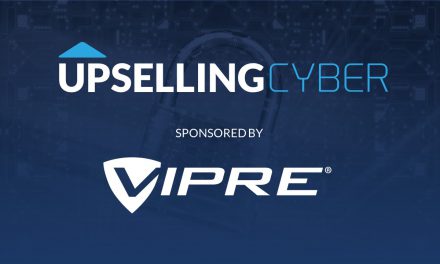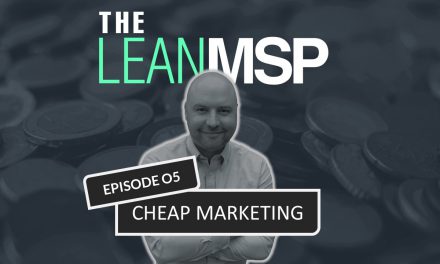How SMBs Behave When Purchasing Managed IT Services
Whether a person is buying a $75 pair of shoes, a $500 4K TV, or a $25,000 per year IT contract, surprisingly their behavior remains relatively the same. The reason being, this is a human instinct that we have all developed over time. It’s our way of fulfilling our needs and solving our problems with the resources (or money) that we have. We identify a problem, find a solution, learn the costs of the solution, and then assess the risk versus reward before purchasing.
Problem Recognition
Before the purchasing process begins, there must be a need that is being fulfilled. Sometimes this need is a very simple physical necessity, such as food or shelter. Other times it is to fill a deep psychological need, such as purchases made from envy or grief. Ultimately, every purchase that is made is traced back to a problem that the buyer has that they are attempting to solve through their decision.
In the case of IT, the root cause of the problem is almost always technical. Not only are you tasked with solving this problem, but you also need to mitigate the customer’s surface reaction that has emerged as a result of it. Emotions such as fear, frustration, and anxiety may all be present and if you alleviate these first you are likely to have a better shot at tackling the problem overall.
Information Search
Once a problem becomes urgent enough for the buyer to solve, they begin to gather information on how they will do so. In the case of an IT Issue, one might research common solutions to the problem they have and how it has been previously solved by others. They may also recall on their own experience or relate it to a similar issue that they once had. This process of gathering information can happen in months or microseconds. It all depends on the urgency of the need and the amount of information that is required.
For example, you likely purchase a candy bar in line at the drug store in a matter of seconds. Purchasing a new home however, requires significantly more time to gather information and create a list of options based on your criteria. This is the reason a value-based brand strategy has become increasingly more warranted in IT. When you document your recommendations and solutions through content, you are ultimately making this information available to be considered at this point in the buyer’s process.
The Ultimate Guide To Cash Flow For Managed Services
Sponsored by Alternative Payments & Zest
Evaluation of Options
Once the consumer has decided how they will fill their need, they narrow their list to a few options that they would ultimately consider. The criteria from which they evaluate this can vary greatly since factors such as personality, experience, convenience, price, and quality all play a role. During this part of the purchasing process the consumer will compute all of these factors and make rulings on which are most important, subconsciously presenting themselves with the best option.
When you present your company’s unique value proposition, you are ultimately building a case to win over the buyer at this point in their process. Assume you are always competing against a slew of your competitors on every deal and find the position that allows you to edge them out in the buyer’s evaluation.
Purchase Decision
Even when the consumer knows what they will purchase and from whom, it still doesn’t necessarily mean that they will purchase immediately. There is a period of time where the consumer has still yet to decide when to act. This could be because they lack financial resources or because the decision is tied to other decisions that must happen in sequential order. Regardless of the reason, the transaction will occur only when the consumer has the resources available and the need reaches its highest point of urgency.
This is the point in the purchasing process that really separates the herd in B2B sales. Closers close. Why? Because their creativity, assertiveness, and focus allows them to influence the most stubborn buyer behavior yet: action. Naturally the buyer will wait to act until the last moment possible unless persuaded to do otherwise. At this very second, you the reader, “intend” to buy a specific thing from a specific place but haven’t yet. Think about why and then relate this behavior to your prospects.
The Ultimate Guide To Cash Flow For Managed Services
Sponsored by Alternative Payments & Zest
Post Purchase Behavior
The consumer activity that occurs after a purchase is made can have a significant impact on the companies they transact with. Should the consumer have a favorable experience, they will be more likely to consider the same option in the future. The consumer will also be likely to recommend the product or service to a friend. If the experience was unfavorable, they may attempt to receive a refund or post a negative review online. All of these actions will ultimately affect future transactions for both the buyer and seller, making this a very important part of the consumer purchasing process.
IT Providers love to sit back and get referrals as a means of growth, yet very few do it with intention. If you want to grow without actively marketing your business, then the only way to do so is to service your customer in a way that influences their post purchase behavior. Over-the-top customer service and a hyper-focus on satisfaction is really a marketing strategy in disguise.
Consumer behavior is slowly evolving but remains relatively the same regardless of what the product is. To think that you can easily manipulate this behavior and rush this process is the same as thinking that you can alter thousands of years of evolution dating back to the bartering systems of BC. Instead of attempting to manipulate it, you should look to accommodate it. This can be done by building a sales and marketing funnel that guides your potential customers through this behavioral process and helps them make their purchasing decision faster and with less friction.

SPONSORED BY ZEST

















